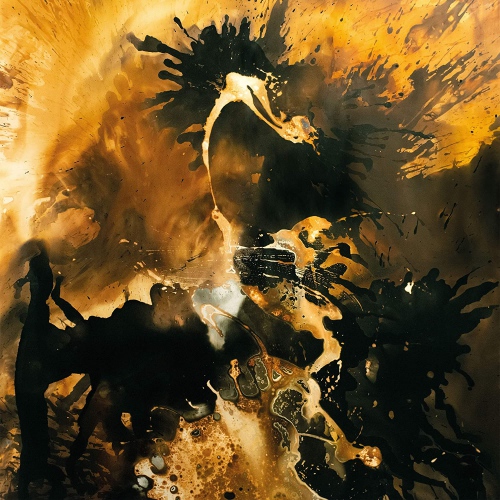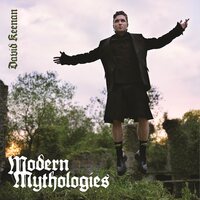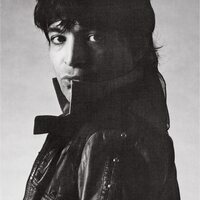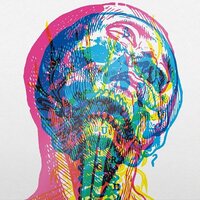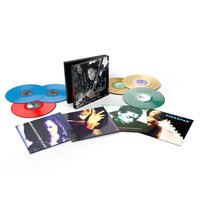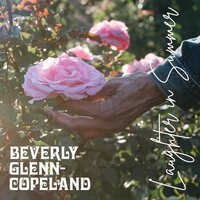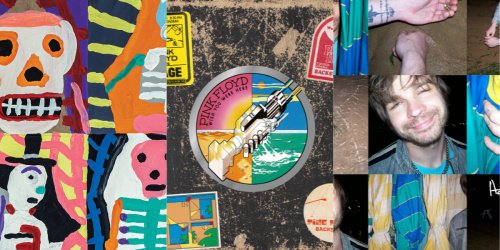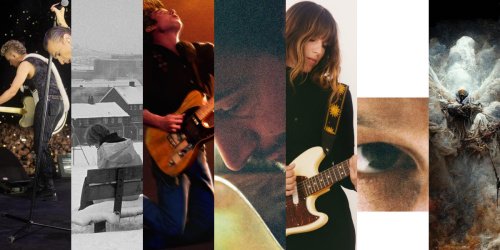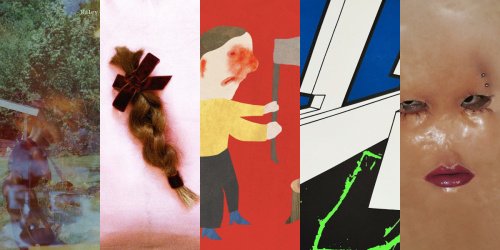Frédéric D. Oberland and Irena Z. Toma in's Arba, Dâk Arba was conceived as the soundtrack for the eponymous installation piece by the French artist Fanny Béguély. First presented as part of the group exhibition »Panorama 21 - Les Revenants « at Tourcoing's Le Fresnoy Studio National des Arts Contemporains in December 2019, Béguély's chemically painted photographs focused on humankind's propensity for self-examination and its attempts to probe the mysteries of the past, present and future. Oberland's heavily processed electric hurdy-gurdy, the »boîte à bourdons,« provides the foundation upon which the Borghesia member Toma in unfolds her gripping vocal magic(k). Their dense mesh of soundscapes and singing mediate between the mystic and the modern, the natural and the all-too-unreal to further examine our persistent desire to decipher the signs we find in nature. As the first collaboration between these prolific experimental artists, Arba, Dâk Arba is as evocative and thought-provoking as the art that has inspired it. It's easy to see why a curious instrument like Oberland's electric hurdy-gurdy would be well suited for the duo's ends, and within its first few minutes the opening track »Grotta« makes it clear that the Oiseaux-Tempête co-founder is more than capable of weaving dark psychedelic sound tapestries with only limited means. The ritualistic energy that Béguély's Arba, Dâk Arba draws on is channeled through abstract drones that mirror the aesthetics of the eight suspended paper rolls the artist's audience were faced with. When the music becomes denser and Toma in finally enters the picture with her signature glossolalic vocal performance, it seems as if the drones emanating from her musical partner's curious instrument bleed right into her voice. Even as the sound of the boîte à bourdons becomes more visceral and Toma in's voice more discernible, »Grotta« remains as intangible as the mythological oracles that had informed the work of Béguély. Shorter pieces like »Amena« or the closing track »Hereafter,« though condensed, offer just as much to decipher - a whole musical world to get lost in, full of riddles and uncertainties. »Fumes« and »Hieromancy« in the second half of the LP are the best examples of how much creative friction lies at the heart of the French experimentalist and the Slovenian singer's collaboration. While in the former song, Toma in first takes the lead singing uncanny, circular motives before stepping aside so Oberland can let the processed sounds of his hurdy-gurdy evolve into chilling crescendi, the latter sees both of them take turns in channeling the pervasive mysticism around them. Blurring the lines between the physical and psychic as well as the real and the hallucionary with their music, Frédéric D. Oberland and Irena Z. Toma in's Arba, Dâk Arba is one of the most radical albums in recent years. An unsettling dialogue between two kindred, yet freely wandering spirits.
Release date:
November 27, 2020
Label:
Install our app to receive notifications when new upcoming releases are added.

Recommended equipment and accessories
-

Ortofon 2M Red Cartridge
Features an elliptical stylus that accurately tracks the grooves of vinyl records, delivering a rich, detailed sound with an output voltage of 5.5 mV
-

Ortofon 2M Blue Premounted
Mounted on the SH-4 Black Headshell, this setup delivers exceptional clarity, dynamic range, and accurate sound reproduction.
-

Pro-Ject Debut Carbon EVO
Featuring a one-piece carbon fiber tonearm, precision-tuned motor, and a heavy steel platter with TPE damping, it ensures superior stability and sound quality.
-

Denon DP-400
Featuring a high-precision, belt-driven mechanism and an adjustable tonearm that ensures optimal tracking and minimal resonance
-

Turntables - Top Picks
A selection of reliable record players you can buy today, for every budget
Featured Upcoming Vinyl
-

Varials Where The Light Leaves
Fearless Records
March 13, 2026 -

Tori Amos Strange Little Girls '97 Bonnie & Clyde Version [2xLP]
Atlantic Catalog Group
February 20, 2026 -

Tori Amos Strange Little Girls I'm Not in Love Version [2xLP]
Atlantic Catalog Group
February 20, 2026 -

Big Special National Average. (Orange/Yellow Marble)
So Recordings
December 26, 2025 -

David Keenan Modern Mythologies
Good Form Recordings
December 19, 2025 -

Alan Vega Alan Vega
Sacred Bones
January 22, 2026 -

Indiana Mandy Urgh
Sacred Bones
February 6, 2026 -

Ice Cube Man Up (Limited Edition) [2xLP]
Ruffnation Music
December 19, 2025 -

Tori Amos Strange Little Girls Real Men Version [2xLP]
Atlantic Catalog Group
February 20, 2026 -

Sananda Maitreya Juvenilia: The Columbia Years [6xLP]
Music On Vinyl
February 6, 2026 -

Melanie C Sweat
Red Girl Media Ltd.
May 1, 2026 -

Jason Aldean Songs About Us (Clear Smoke; Amazon Exclusive) [2xLP]
Bmg
April 24, 2026 -

Howard Jones Live At The Marquee (Translucent Yellow) [2xLP]
Cherry Red
January 30, 2026 -

Beverly Glenn-Copeland Laughter in Summer (Pink)
Transgressive
February 5, 2026
